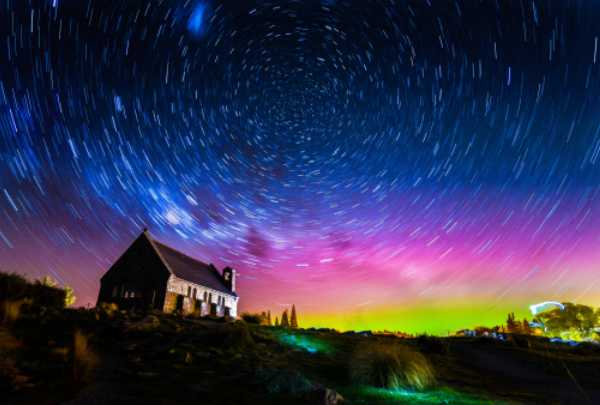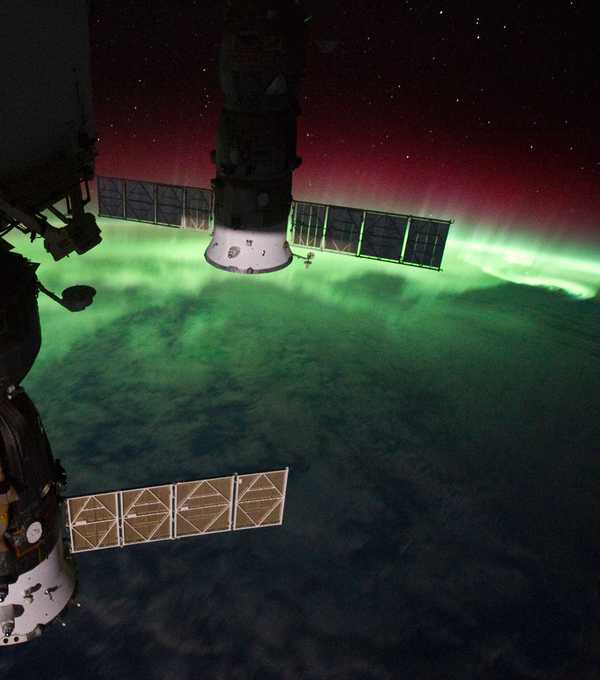
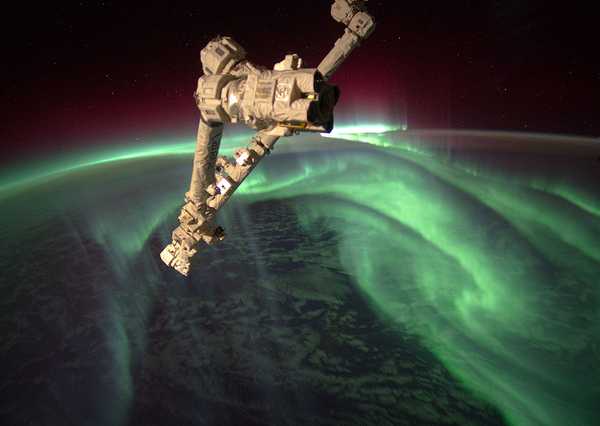
The aurora australis is often observed and photographed by lower-orbiting satellites and spacecraft including NASA’s Space Shuttle (now retired) and the International Space Station. We’ll forgive the Canadarm2 robotic arm for photobombing the second image above, taken on July 15th of 2012 by ISS astronauts from Expedition 32.
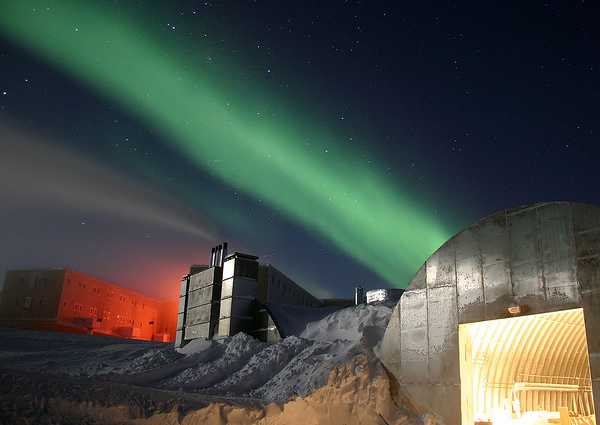
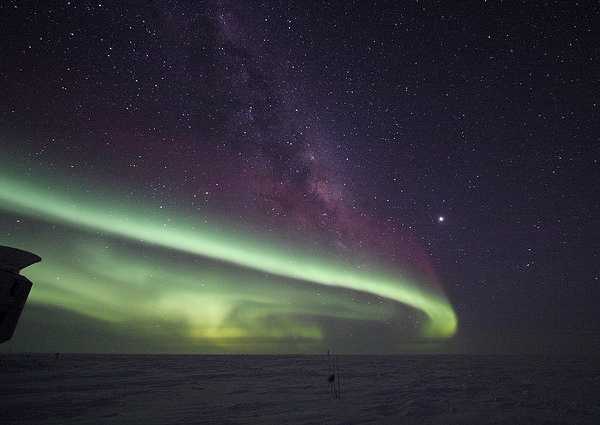
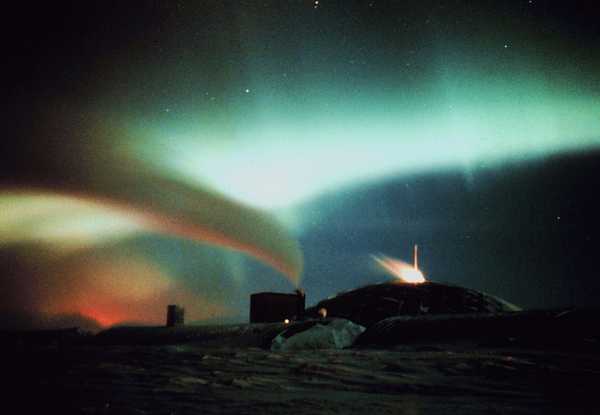
A short 25-second exposure and some help from a full moon give the Amundsen-Scott South Pole Station an especially unearthly vibe! At 90-degrees south, residents of and visitors to the station have a front-row seat to the greatest light show off Earth – when the antarctic weather cooperates, that is. Observers in the “deep south”, ahem, also benefit by the lack of man-made light pollution, a serious consideration as the aurorae are easily washed out by extraneous light sources.
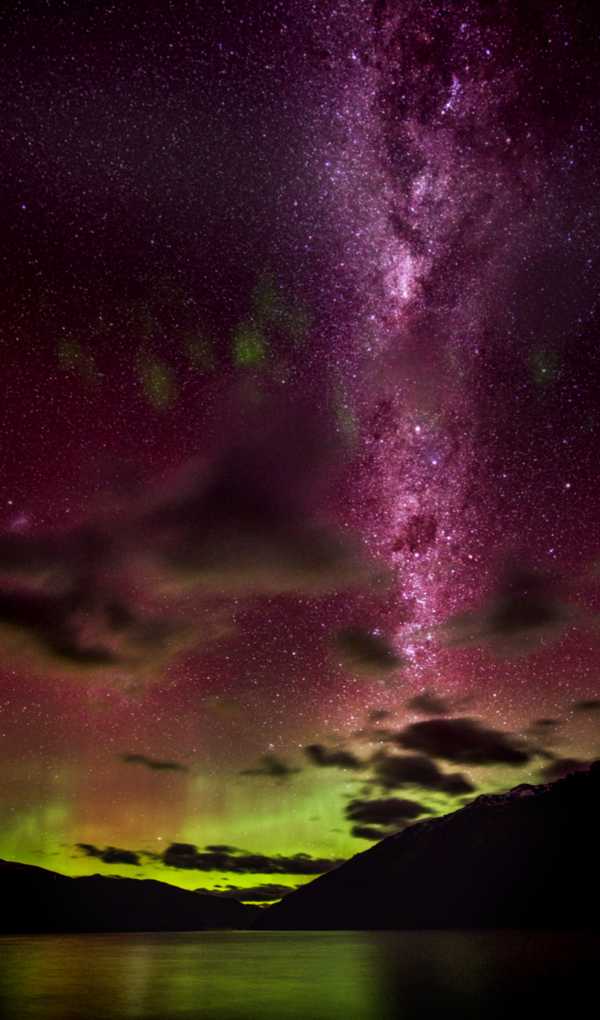
It doesn’t always take a trip to the south pole and/or the rare occasion of a major solar flare to bring the beauty of the aurora australis to multitudes of admirers, however. It does help that said multitudes live in some of the world’s more southerly countries – Australia, New Zealand, South Africa and parts of Patagonia shared by Chile and Argentina to name a few. These places are all home to large cities but still offer secluded areas within easy reach from which to observe the flickering joys of the southern sky. Don’t forget to bring your camera!

